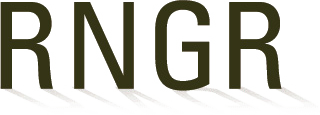
Asclepias (spp.)
|
John Vandevender Manager USDA NRCS - Appalachian Plant Materials Center P. O. Box 390 Alderson, West Virginia 24910 304-445-3005 John.Vandevender@wv.usda.gov http://plant-materials.nrcs.usda.gov/wvpmc |
|
| Family Scientific Name: | Asclepiadaceae | ||
|---|---|---|---|
| Family Common Name: | Milkweed | ||
| Scientific Name: | Asclepias spp. L. | ||
| Common Name: | milkweed | ||
| Species Code: | ASCLE | ||
| Ecotype: | Appalachian | ||
| General Distribution: | Asclepias, both native and introduced, is indigenous throughout the coterminous United States and Canada. | ||
| Known Invasiveness: | None | ||
| Propagation Goal: | Seeds | ||
| Stock Type: | de-fluffed seed | ||
| Target Specifications: | Clean, de-fluffed seed suitable for planting in individual pots or nursery tray cells in a greenhouse and/or nursery setting. | ||
| Propagule Collection: | Asclepias seed is produced in a pod which splits open at maturity to release the seed. Seeds are covered in fine hairs which aid in natural windblown seed dispersal. Seed pods are collected by hand just prior to splitting open to release the seed and allowed to air dry indoors. Pods selected for harvest should have turned or begun to turn from a green to a brown color, but have not yet begun to open. | ||
| Propagule Processing: | Once the pods have fully opened, the husks (pods) are removed by hand and the seed allowed to "fluff up" as it would in a natural setting. "fluffing up" can be accelerated by gently mixing or stirring the seed by hand. When the seed is observed to have attained maximum "fluffiness" small lots are placed in a metal container. We typically use a large diameter metal tub. The tub is filled approximately 3/4 full of loosely placed seed. Any dense clumps of fluff are gently dispersed by hand. Once seed has been properly placed in the tub, an ignition source is introduced to the fluff (we typically use a butane lighter). The fluff burns quickly (within 15-20 seconds) while generating minimal heat, smoke and ash. Any non-burned fluff is reignited using the ignition source. Clean, completely fluff free seed and a tiny amount of ash drops to the bottom of the tub and is removed before the next lot is placed in the bucket. We have cleaned large quantities of Asclepias seed using this method and have not observed any difference in seed germination versus seed that has been mechanically de-fluffed. | ||
| References: | USDA, NRCS. 2018. The PLANTS Database (http://plants.usda.gov, 1 August 2018). National Plant Data Team, Greensboro, NC 27401-4901 USA | ||
Citation:
Vandevender, John. 2018. Propagation protocol for production of Asclepias spp. L. Seeds de-fluffed seed; USDA NRCS - Appalachian Plant Materials Center Alderson, West Virginia. In: Native Plant Network. URL: https://NativePlantNetwork.org (accessed 2025/11/07). US Department of Agriculture, Forest Service, National Center for Reforestation, Nurseries, and Genetic Resources.



